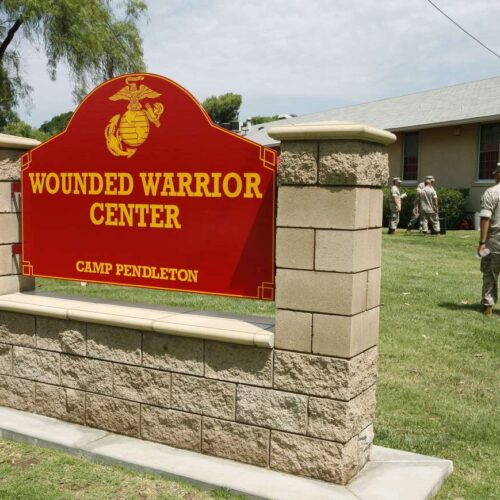Introduction
Terrible medical care, long delays in service, and soldiers who felt like they were in a “petting zoo”: Those are just some of the issues identified in a Department of Defense Inspector General report issued March 30th on the Wounded Warrior Regiment.
Founded in 2007 as a way to help guide wounded Marines and sailors towards accepting and living with their injuries, the WWR has supported nearly 27,377 wounded, ill, and injured Marines. With camps throughout the country, WWR is among the leading groups in rehabbing both injured service members and their families.
But it has been seriously shortchanged by the Marines, according to the IG’s report. Both staff and service members undergoing treatment had a litany of complaints. Some beefed that they were forced to endure visits from VIPs, nonprofit groups and reporters looking for “visibly wounded” Marines with whom they could talk. One said he felt like he was in a “petting zoo.” Prescriptions were poorly monitored and frequently given in excessive quantities, creating a potential for drug misuse. The health care privacy act known as HIPPA was not respected at one location, causing medical information to be passed around loosely.
But the overarching problem highlighted in the report is the length of time it takes service members to be cleared to leave WWR facilities. At one location, Camp Lejeune in North Carolina, Warriors spent an average of 730 days — two full years — before being discharged. More than a fifth of the wounded service members at that location spent three years there, sometimes just waiting for paperwork to be processed. Some Marines had to wait three months for neurological exams, and then wait again to get a pain management appointment.
For a group of Marines accustomed to a life of action, being forced to stay in one place for two years can be torture. Marines told DODIG investigators that the barracks was a “‘sad place to be,’ and that Marines, specifically junior Marines, did not know how to handle their ‘down time,’ had low morale, and that they did not feel they were ‘part of a team.’”
Said one Marine, “Everyone seems so depressed, angry, and stressed, and they just want to get out of here.”
The staff saw the same problems. One was quoted in the report as saying the process takes “too long, making it hard to keep Marines out of trouble while their board was being processed.”
The main problems, according to the IG, are short staffing and poor organization. Again using Camp Lejeune as an example, the ratio of marines to counselors was 95:1, as opposed to the recommended 20:1. Excessive military bureaucracy drags the whole system down, with Lejune organizers complaining about a long lag time to get responses from DC and the absence of an organized filing system.
Much of the challenge stems from how the program came into existence, according to those interviewed by the IG’s investigators — one respondent said putting the program together was like ““building an airplane in flight.” The report recommended providing “meaningful activities” such as internships to service members, emphasizing patient satisfaction metrics, and screening visitors more carefully.
In a response included in the report, an officer in the regiment generally concurred with the recommendations. Lt. Col. N. E. Davis, of Camp Lejeune, also asked the IG to note that since the review was conducted, “there have been ongoing efforts” to improve performance. These included moving wounded soldiers at the base into a new barracks closer to medical experts, and conducting an “organizational climate survey.”
“Process improvements in wounded warrior care and family support are ongoing. We continue to enhance the initiatives noted by the DoD IG team as ‘noteworthy practices,’ as well as [to] identify challenges that inhibit support,” Davis said.
Read more in National Security
Up in Arms
Fooled again by Carlos and Ricardo
The DEA hits repeated home runs with its FARC impersonations
Up in Arms
Russian arms dealer gets 25-year prison sentence
Victor Bout, one of the world’s most notorious weapons traffickers, was the subject of a 2002 ICIJ investigation


Join the conversation
Show Comments